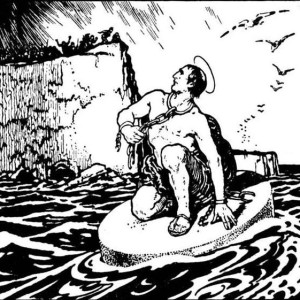Thursday Thoughts: Megaliths
Cornwall is rich in neolithic monuments. The famous Cheesewring is near the village of Minions, which was once a tin and copper miming center. The village is some 3 miles from Liskeard, my birthplace.
How was this extraordinary structure created? Was it an example of the engineering feats of our ingenious Celtic ancestors? There is a simpler explanation. The Cheesewring was formed when the saints and the giants were both inhabiting Cornwall. The giants had lived there longer and were annoyed by the saints moving in and ‘taking over’; putting more stone crosses up, making wells holy and taking too many tithes (taxes) from the harvest.
One day St. Tue heard the giants discussing the best way of ridding the county of the saints so he decided to challenge the leader (Uther) to a trial of strength. This took the form of a rock throwing contest and if the saints won then the giants would have to renounce their wicked ways; but if the saints lost then they would have to leave Cornwall, never to return. Uther was a champion rock thrower whose specialty was balancing larger rocks on top of smaller ones, and St. Tue was very small so in theory there should have been no doubt about the result.
After gathering twelve flat rocks of varying sizes Uther took first throw. The rock landed about 100 feet away towards Stowe’s Hill. St. Tue picked up a rock, looked to the skies and suddenly the rock felt as light as a feather in his hand. He cast it toward the first thrown rock and it landed neatly on top. So they continued until there was only one rock left and it was St. Tue to throw. This too landed perfectly on the pile and, not wanting to admit defeat, Uther suggested that they throw ‘one more for luck’.
He picked up a huge stone and using all his strength threw it. It fell short of the pile, rolled back down the hill and landed at the saint’s feet. As the saint prayed for holy intervention an angel, visible only to him, appeared and carried the stone to the pile. Placing it neatly on the top the angel then vanished and the saints had won.
Uther promised to mend his ways and so did most of the other giants, although some went into the hills muttering about revenge.






